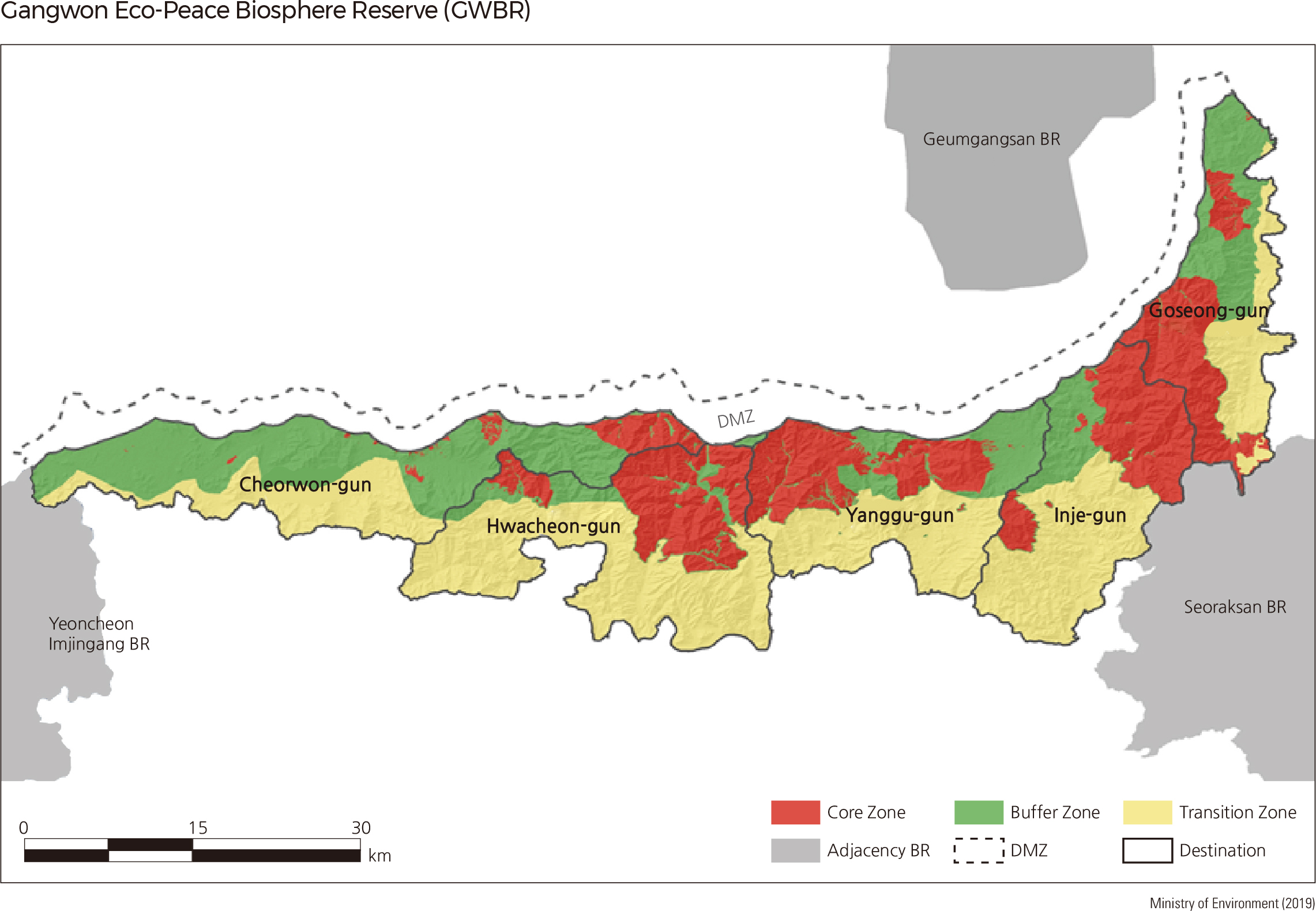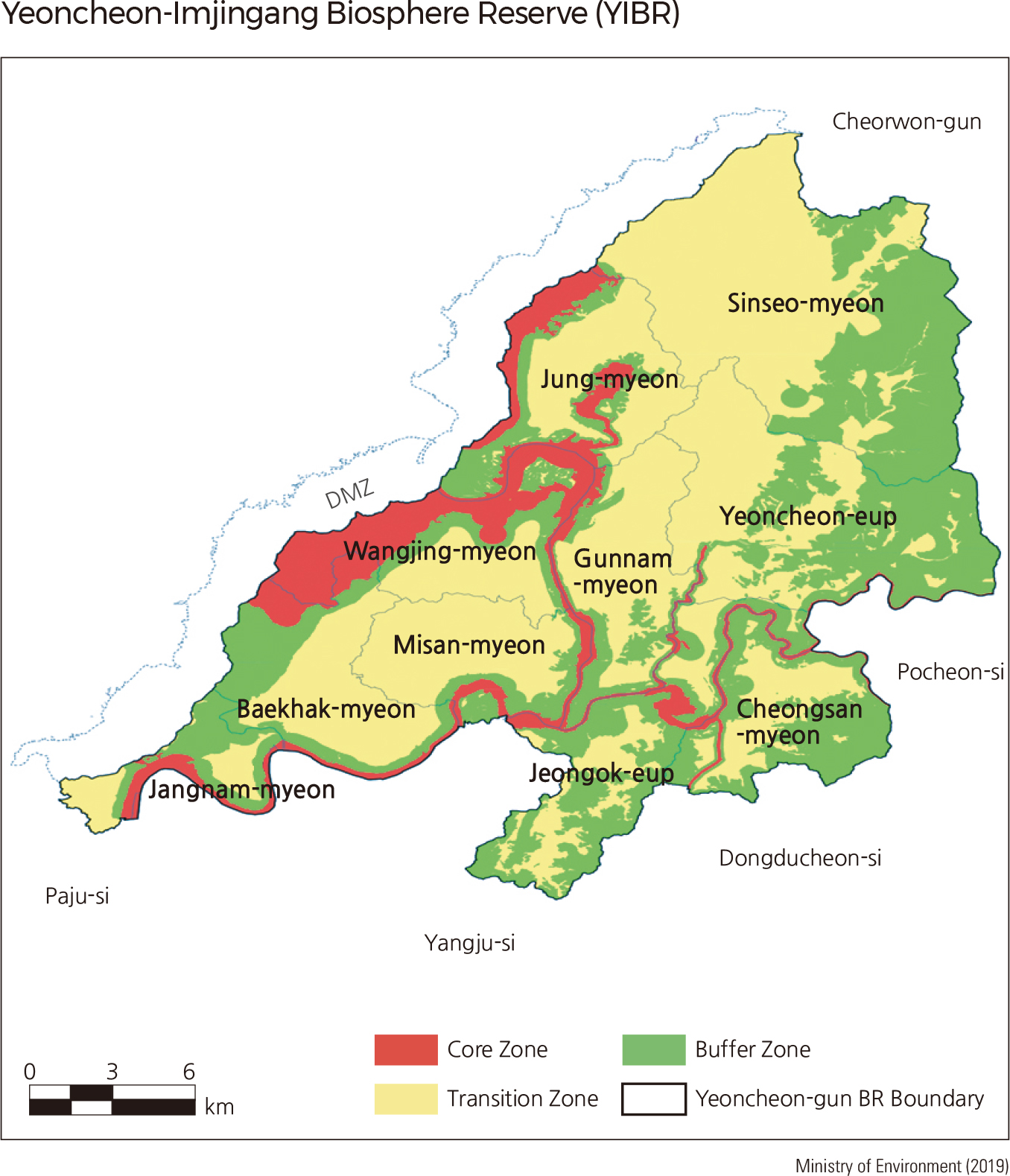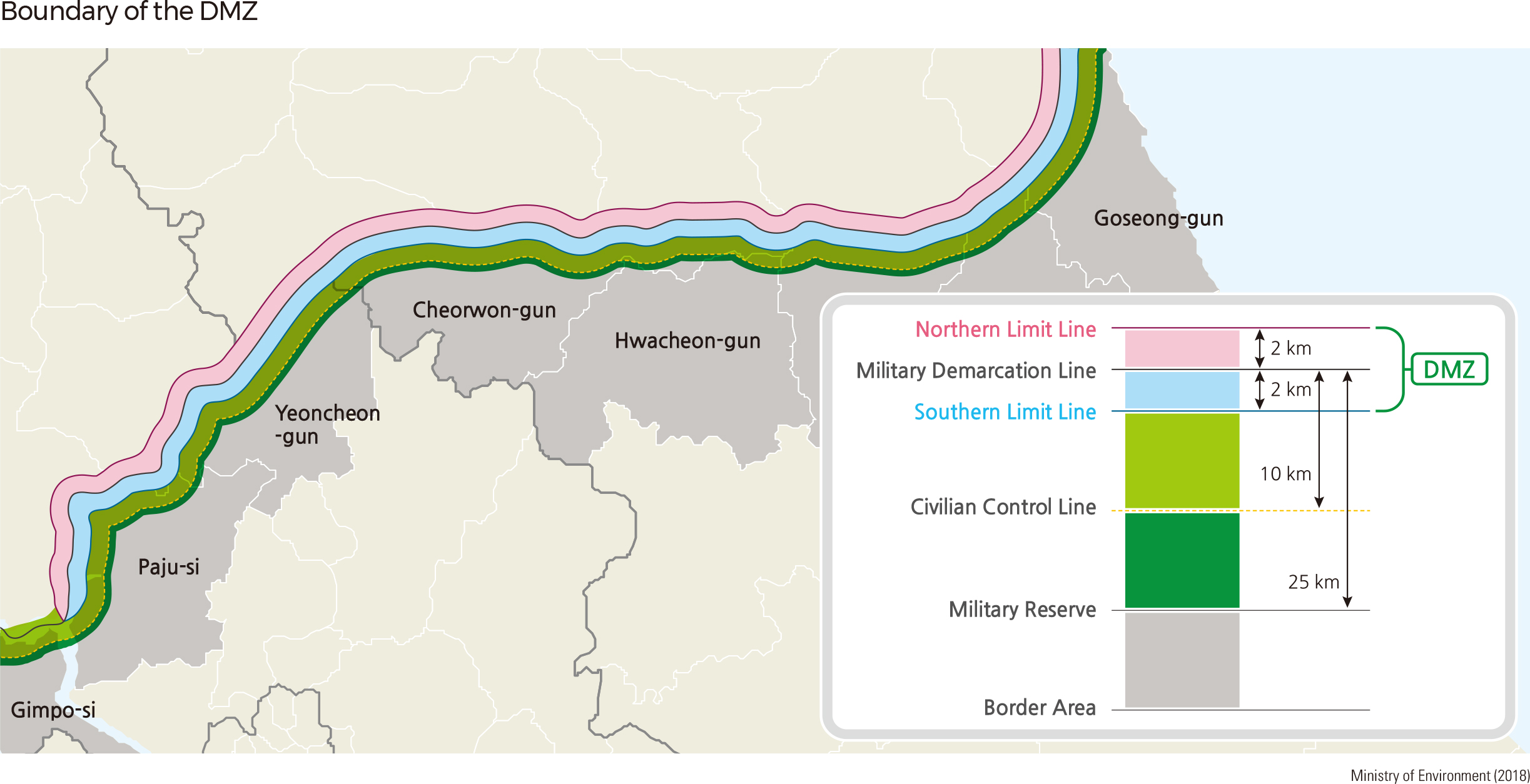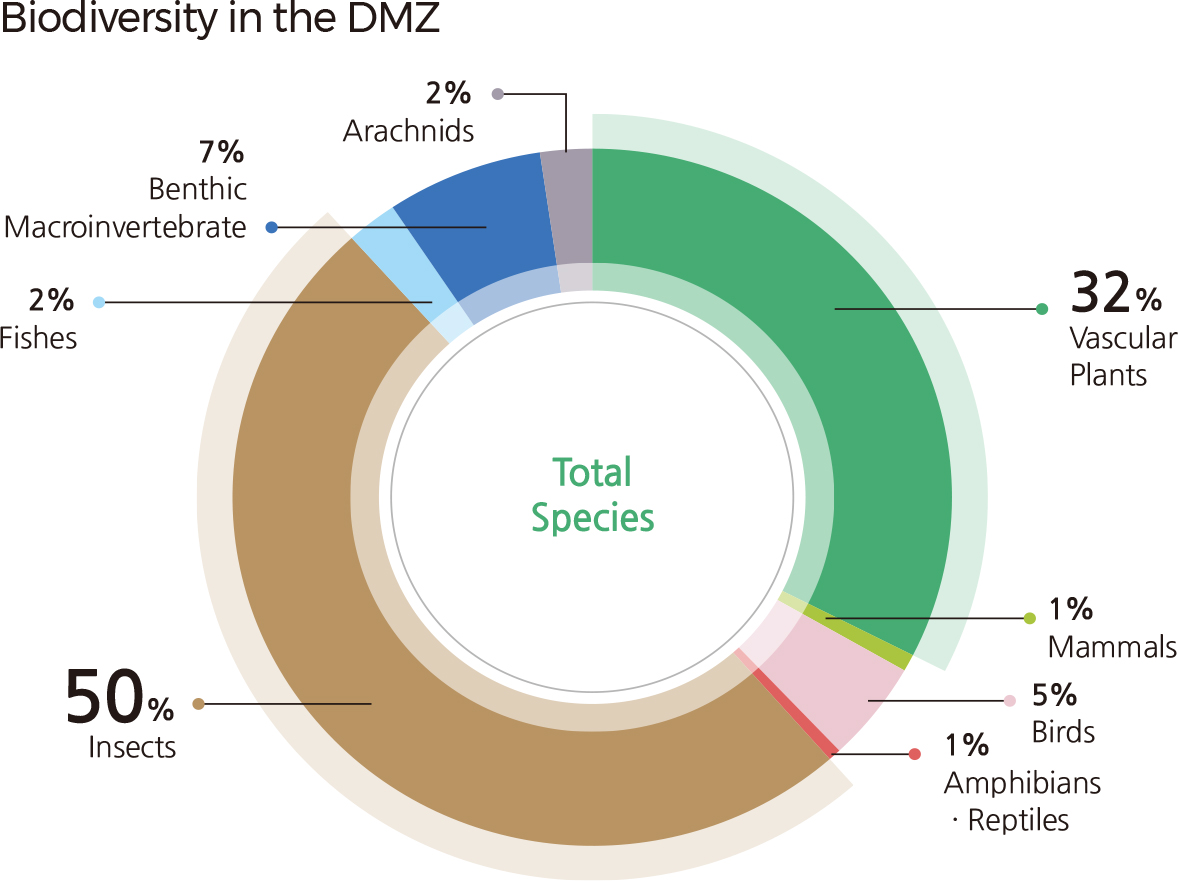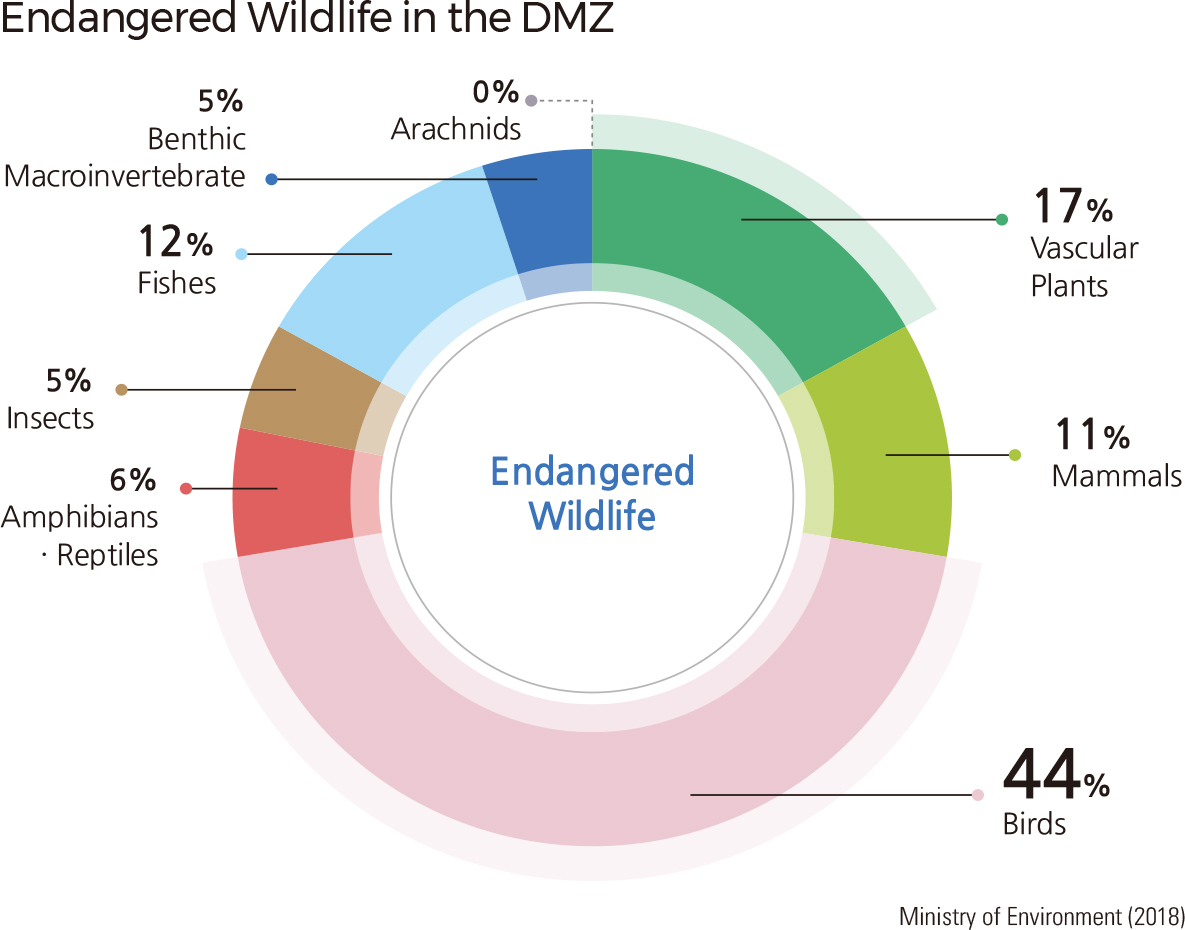English II 2020
The Man and the Biosphere Programme (MAB) is an intergovernmental scientific program, launched in 1971 by UNESCO, that aims to protect biodiversity and to foster sustainable development. MAB implements various projects, such as Biosphere Reserves (BR), scientific research, training, and collaboration, which are closely related to biodiversity conservation.
The Gangwon Eco-Peace Biosphere Reserve (GWBR) covers 182,815 ha in five counties, including Cheorwon-gun, Hwacheon-gun, Yanggu-gun, Inje-gun, and Goseong-gun in the Civilian Control Zone of Gangwon-do. Yeoncheon-gun in Gyeonggi-do belongs to the Yeoncheon-Imjingang Biosphere Reserve (YIBR), covering 58,412 ha.
The Demilitarized Zone (DMZ) region refers to the DMZ and the northern area of the Civilian Control Line. The DMZ of the Korean Peninsula was established by the provision of the Korean Armistice Agreement signed on July 27, 1953.
The DMZ covers the area between the Northern and Southern Boundary Lines, located 2 kilometers away from the Military Demarcation Line (MDL) in the north and south across the Korean Peninsula. The Civilian Control Line (CCL) was set to 10 kilometers away from the Military Demarcation Line. The northern area of this line was designated as the Civilian Control Zone (CCZ) to limit civilian access. Since the end of the war, the DMZ has become a nature preserve, where human access is restricted.
The DMZ is an ecological belt that crosses the Korean Peninsula from east to west. The eastern mountainous region of the DMZ meets the Baekdudaegan, and the eastern and western ends meet the sea. Therefore, various ecosystems such as forest ecosystems, marine ecosystems, and rivers, wetlands, and valleys appear in the DMZ. The DMZ region provides a habitat for wildlife flora and fauna, including Natural Monuments and Endangered Wildlife. Primitive ecosystems in the DMZ play an important role in conserving biological diversity, habitat for rare animals and plants, and the international flyway of various migratory birds, including Red-crowned Cranes.
The DMZ provides the natural habitat for animals and plants. A total of 5,929 wildlife species are identified in the DMZ, including 2,954 insect species, 1,926 plant species, 417 benthic macroinvertebrates species, 277 bird species, 138 spider species, 136 freshwater fish species, 47 mammal species, and 34 amphibian/reptilian species. The ecological value of the DMZ is exceptional. A total of 101 Endangered Wildlife are identified in the DMZ, which accounts for about 38% of all 267 Endangered Wildlife.
A total of 18 Class I Endangered Wildlife were identified: 6 mammals, including the Siberian Musk Deer (Moschus moschiferus) and Eurasian Otter (Lutra lutra), 10 birds, including Golden Eagle (Aquila chrysaetos) and Chinese Egret (Egretta eulophotes), an amphibian species, Spotless Tree Toad (Hyla suweonensi) and a fish species, Hynsumaja (Gobiobotia nakdongensis).
A total of 83 Class II Endangered Wildlife were identified: 17 plants, including Silene Flos-cuculi (Lychnis kiusiana) and Siberian Ginseng (Eleutherococcus senticosus), 5 mammals, including the Yellow-throated Marten (Martes flavigula) and Leopard Cat (Prionailurus bengalensis), 35 birds, including the Swan Goose (Anser cygnoides) and Eurasian Oystercatcher (Haematopus ostralegus), 5 amphibians and reptiles, including the Korean Rat Snake (Elaphe schrenckii) and Seoul Frog (Pelophylax chosenicus), 5 insects, including the Dung Beetle (Copris tripartitus) and Palaearctic Butterfly (Argynnis nerippe), 11 freshwater fish, including the Slender Shiner (Pseudopungtungia tenuicorpa) and Amur Stickleback (Pungitius sinensis), and 5 benthic macroinvertebrates, including Bekko Tombo (Libellula Angelina) and the Diving Beetle (Cybister chinensis). |
